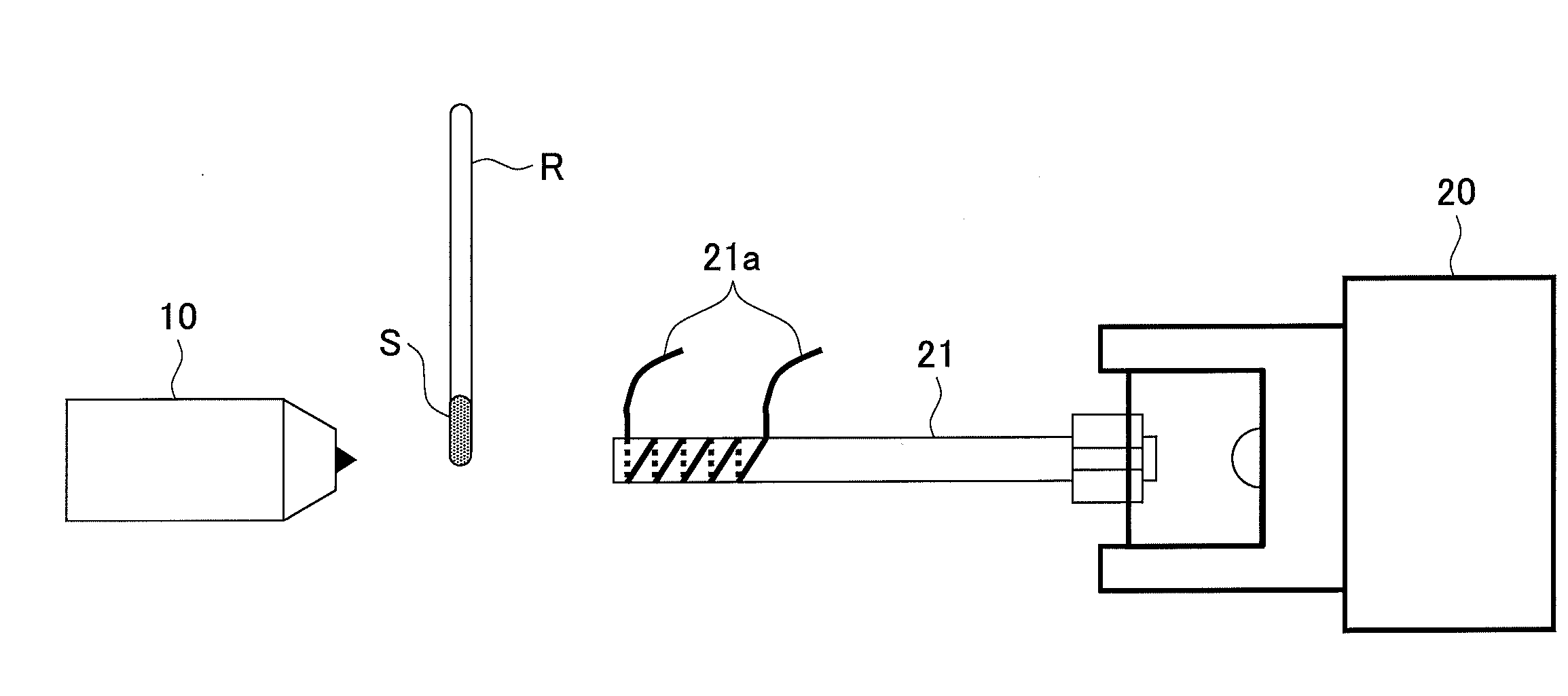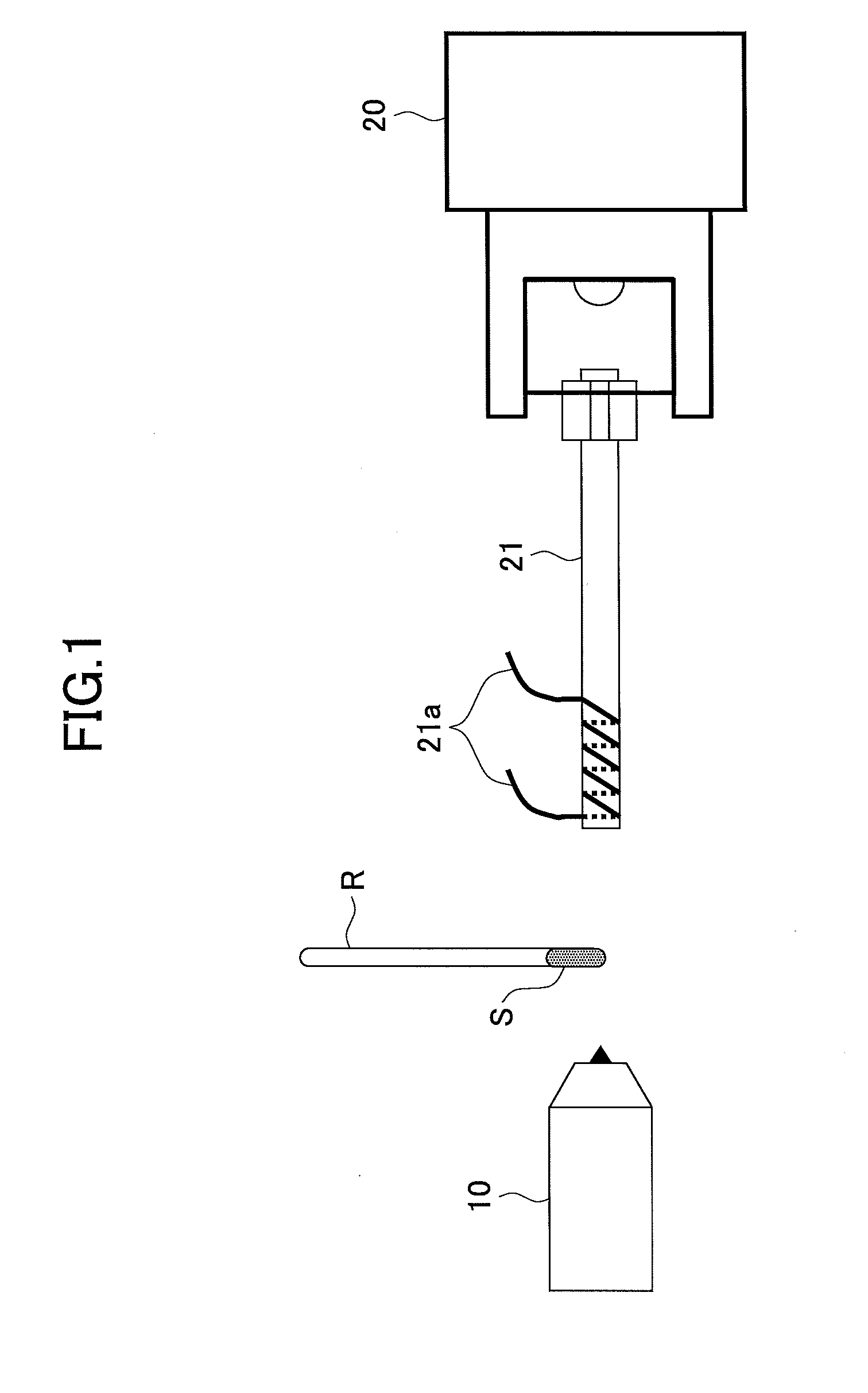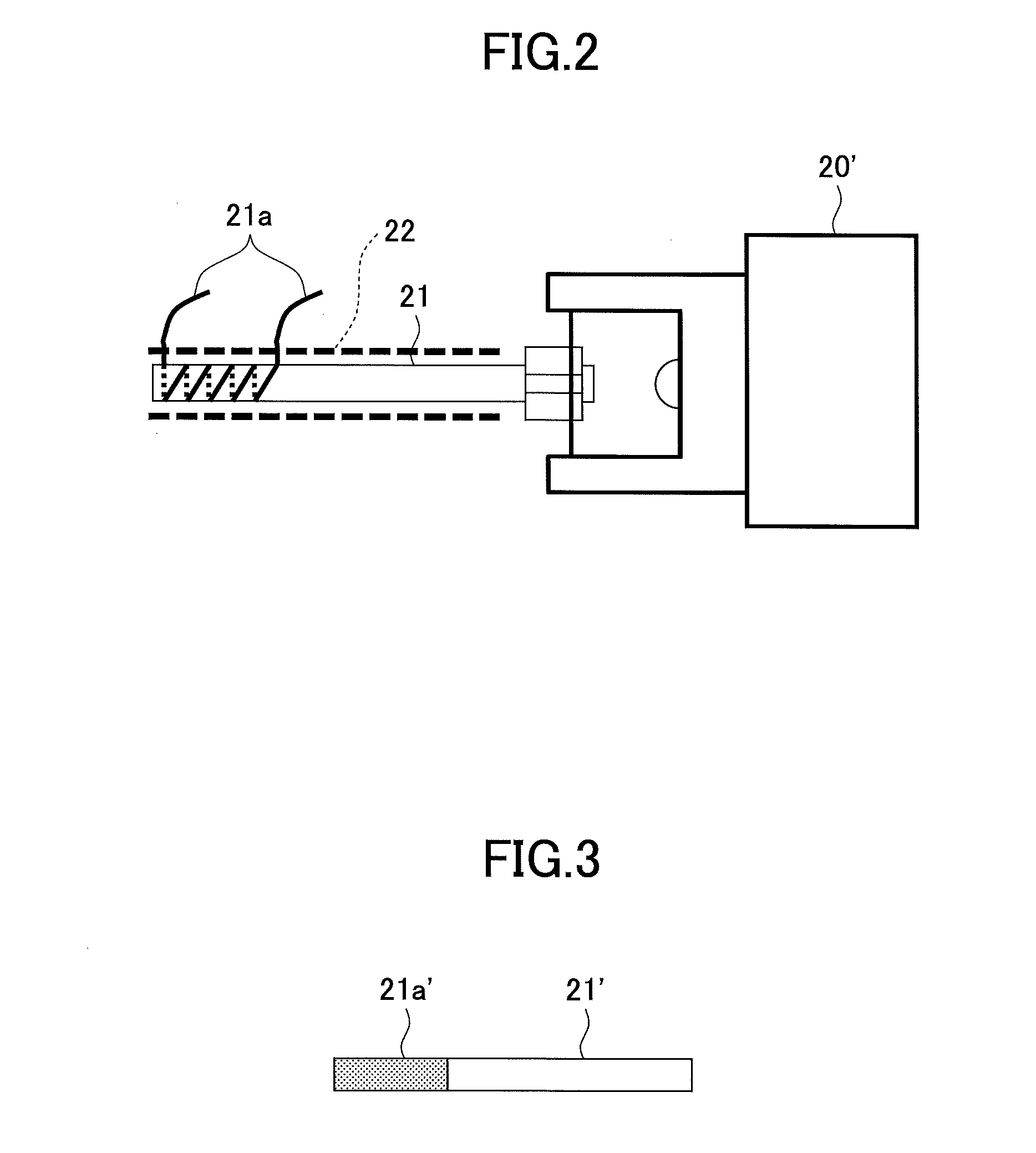Mass spectrometry method, mass spectrometer, and mass spectrometry system
a mass spectrometry and mass spectrometry technology, applied in the field of mass spectrometry methods, mass spectrometers, mass spectrometry systems, to achieve the effect of suppressing contamination of an ion introduction par
- Summary
- Abstract
- Description
- Claims
- Application Information
AI Technical Summary
Benefits of technology
Problems solved by technology
Method used
Image
Examples
example 1
Practical Example 1
[0074]A glass rod was dipped in a 5% by mass solution of a polyethylene glycol with an average molecular weight of 400 in methanol so that the polyethylene glycol was attached to the glass rod R as a sample S.
[0075]Then, mass spectrometry of an ion that was produced from the polyethylene glycol was conducted by using the mass spectrometry method in FIG. 1. Specifically, first, while a helium in a metastable excited state He (23S) was collided with water in atmosphere to cause penning ionization thereof by using a DART ion source 10 and the polyethylene glycol that was attached to the glass rod R was irradiated with a produced proton, a produced ion was introduced into a mass spectrometer 20 so that mass spectrometry was conducted (1.5-3 min). Then, the Dart ion source 10 was stopped (3-6 min). Moreover, an ion introduction tube 21 was heated by applying an electric current of 4.5 A to a resistance heating wire 21a (5-6 min). Herein, a temperature of an inner wall ...
example 2
Practical Example 2
[0079]A glass rod R was dipped in a 5% by mass solution of a polyethylene glycol with an average molecular weight of 400 in methanol so that the polyethylene glycol was attached to the glass rod R as a sample S.
[0080]Then, mass spectrometry of an ion that was produced from the polyethylene glycol was conducted by using the mass spectrometry method in FIG. 1. Specifically, first, while a helium in a metastable excited state He (23S) was collided with water in atmosphere to cause penning ionization thereof by using a DART ion source 10 and the polyethylene glycol that was attached to the glass rod R was irradiated with a produced proton, a produced ion was introduced into a mass spectrometer 20 so that mass spectrometry was conducted (1.5-3 min). Additionally, an ion introduction tube 21 was heated by applying an electric current of 4.5 A to a resistance heating wire 21a (1-4 min). Herein, a temperature of an inner wall of the ion introduction tube 21 was elevated f...
example 3
Practical Example 3
[0085]After a polypropylene, as a sample S, was put into a pot 31 made of a heat-resisting glass, the pot 31 was held by a pot holding member 32.
[0086]Then, mass spectrometry of an ion that was produced from a gas that was generated by heating the polypropylene was conducted by using a method for heating the sample S to generate a gas by using the resistance heating wire in FIG. 4. Specifically, first, while a helium in a metastable excited state He (23S) was collided with water in atmosphere to cause penning ionization thereof by using a DART ion source 10 and a gas that was generated by heating the polypropylene was irradiated with a produced proton, a produced ion was introduced into a mass spectrometer 20 so that mass spectrometry was conducted (1-3 min). Herein, the pot holding member 32 was heated to 570° C. by applying an electric current of 4.5 A to a resistance heating wire 32a. Then, the DART ion source 10 was stopped (3-7.8 min). Moreover, the ion intro...
PUM
 Login to View More
Login to View More Abstract
Description
Claims
Application Information
 Login to View More
Login to View More - R&D
- Intellectual Property
- Life Sciences
- Materials
- Tech Scout
- Unparalleled Data Quality
- Higher Quality Content
- 60% Fewer Hallucinations
Browse by: Latest US Patents, China's latest patents, Technical Efficacy Thesaurus, Application Domain, Technology Topic, Popular Technical Reports.
© 2025 PatSnap. All rights reserved.Legal|Privacy policy|Modern Slavery Act Transparency Statement|Sitemap|About US| Contact US: help@patsnap.com



